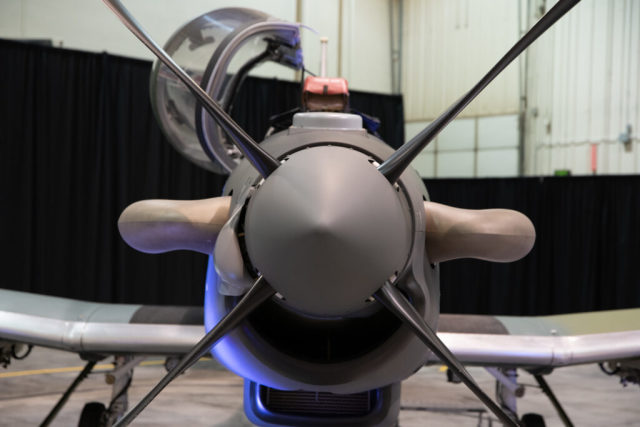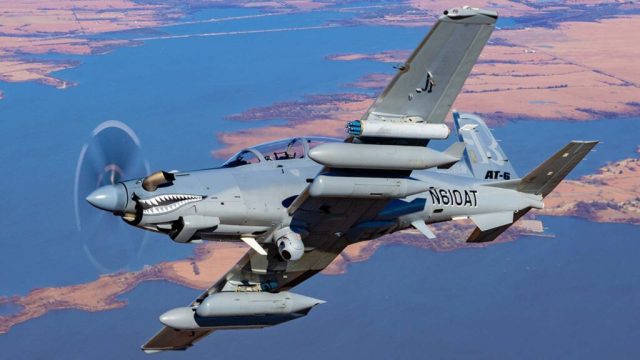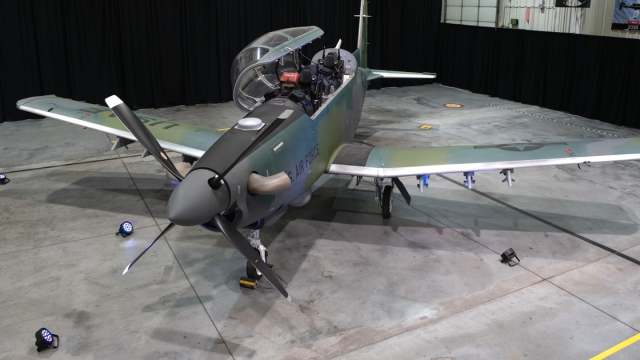The US Air Force received the first AT-6E Wolverine aircraft. The delivery was carried out within the framework of the AERONet (Airborne Extensible Relay Over-Horizon Network) program, aimed at developing aviation science.
The US Air Force received the first single-engine turboprop attack aircraft Beechcraft AT-6E Wolverine. The US Air Force Life Cycle Management Center (AFLCMC) at Wright-Patterson Air Force Base announced this on February 17.
The AT-6E is a variant of the T-6 Texan II, a training aircraft from Beechcraft (a division of Textron). The machine is designed as a light attack aircraft, which, among other things, can be used for reconnaissance and observation missions. The most obvious difference between the AT-6E and the standard Texan II training pylons is the six underwing pylons. On them, among other things, you can place high-precision bombs and missiles.

AT-6E
Image source: thedrive
It is reported that the model for the Air Force is equipped with the WESCAM MX-15D module, which includes a laser designator from the company L3Harris. Another notable feature is the round antenna in the nose.

AT-6E
Image source: thedrive
The Air Force has previously said it could purchase up to three such aircraft to support a program called the Airborne Extensible Relay Over-Horizon Network, or AEROnet. It aims to develop a low-cost communication and data exchange architecture. Thus, instead of fire support from the air, the aircraft currently delivered will most likely be used to collect information and exchange data.

AT-6E Demonstrator
Image source: thedrive
The prospects for updating the American attack aircraft are not yet fully known. Earlier, the United States wanted to abandon the legendary A-10 attack aircraft, but still left the car in service.
Moreover, the fleet of attack aircraft of the US Air Force decided to modernize. The Americans paid special attention to the new aircraft weapons, which significantly expand the capabilities of the old winged machines.
It is known that after completion, the A-10 can carry up to 18 new GBU-39 guided bombs, which theoretically allows it to hit 18 different targets in a single sortie. Due to its high accuracy, the munition can effectively destroy various targets, despite the relatively small mass of the explosive - 93 kilograms.
Russia, in turn, relies on the Soviet Su-25,which after the next stage of modernization was called the Su-25SM3 and was able to approach the combat capabilities of the American A-10C.



